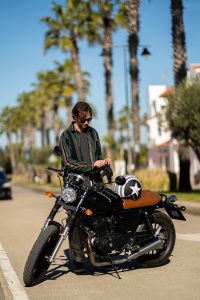
What motorcycle laws do you need to know in California?
Depending on the state you live in, motorcycle laws will vary and have different levels of importance. California is no exception. Knowing the laws is important for people living or visiting California if you want to drive your motorcycle safely. So, here are some of the important motorcycle laws everyone should know before riding your bike in California.
Lane Splitting
While lane splitting isn’t uncommon, California is the only state that explicitly allows it and protects motorcyclist rights to do it. Allowing motorcycles to ride between lanes of slow-moving or stopped traffic is a great way to prevent more traffic build-up. However, California notes that everyone needs to exercise caution and has specific guidelines when it is allowed. Riders can only lane split whenever the traffic drops below 40mphs and can only move 10mphs faster than the traffic around them.
Before lane splitting, motorcyclists should keep an eye on their surroundings and be cautious about how fast they are driving.
Motorcycle Equipment Requirements
When it comes to your equipment, California is very strict on what needs to be on your motorcycle. Yet, these are important laws that can prevent fatalities on the roadway and can protect riders, drivers, and pedestrians from harm. First of all, helmets. Motorcycle helmets are a requirement for all riders and passengers, regardless of their age. Riding without a helmet can lead to a fine and 1 year of probation on your license. Other laws you need to know are:
- Motorcycles require left and right mirrors that can view the highway for 200 ft
- Handlebars cannot put the driver’s hands more than six inches above his or her shoulder height while sitting
- Motorcycles must have functioning turn signals
- Motorcycles built from 2013 and onward need to be compliant with the Motorcycle Anti-Tampering Act
- All Motorcycles are required to have a minimum of one headlight to drive at night
- Taillights need to be on a motorcycle and stay on for a minimum of 15 minutes once the engine turns off
Passenger Laws
According to California law, there is no age restriction on who can ride on a motorcycle. However, all passengers need to be able to sit “on a seat securely fastened to the machine at the rear of the driver and provided with footrests, or in a sidecar…” That means that children can ride on a motorcycle as long as they do not need a child safety seat. Outside of that, passengers need to keep their feet on the footrests while the motorcycle is moving and wear a helmet.
Whether you are a resident or a visitor, knowing these laws can help you remain safe while enjoying all the sights and motorcycle routes the state has to offer. Looking to sell your motorcycle? Get a FREE Quote now!
 Sell Motorcycles for Cash
Sell Motorcycles for Cash